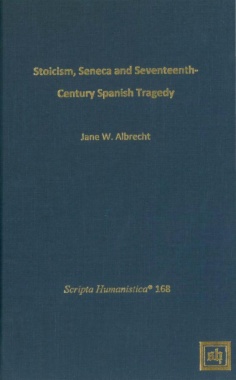This exciting study is essential reading for students and scholars of theater. It challenges the premise of most critical interpretations of the comedia, which are based on the notion of the originality of Lope de Vega's dramatic theory and practice and his repudiation of Classical models and the Senecan style, which formed the nucleus of sixteenth-century tragedy·, a popular but short-lived form.
The book identifies thirty-one plays from the period 1596 to 1653 as a body of Golden Age tragedy with shared roots in Senecan tragedy and Stoic moral philosophy. The works, by Lope de Vega, Tirso de Molina, Calder6n de la Barca, Mira de Amescua, Ruiz de Alarcon and others, are not homogenous, but they do have common-origins, themes, sensibilities and motives. In addition to its grounding in Christian dogma and Aristotelian tbeory, Spanish tragedy was backed by a rich Stoic ethical heritage and steeped in Senecan dramatic practice.
- Cubierta
- Portada
- Índice
- Acknowledgments
- Introduction
- Chapter One: The Stoic and Senecan Legacy
- Stoic Philosophy
- Stoic Influence on Christianity
- The Stoic Heritage of Renaissance and Baroque Moral Philosophy
- Seneca' s Influence on Spanish Baroque Drama
- The Stoic-Senecan Influence on Golden Age Tragedy
- Chapter Two: Lust and Incest
- Chapter Three: Revenge
- Chapter Four: Tyranny
- Chapter Five: Constancy
- Conclusion
- Works Cited
- Contracubierta

